Valine is a branched-chain essential amino acid. In addition to building up the body, it is also used to generate energy in situations of particular performance requirements. The need for valine is particularly high in competitive athletes.
What is valine
Valine is a branched chain amino acid that is essential for the body. Due to the branched hydrocarbon chain, it cannot be synthesized by the human organism.
In addition to the essential branched-chain amino acids leucine and isoleucine, it is one of the BCAAs (Branched-Chain Amino Acids), the need for which increases sharply in stressful situations and during high athletic performance. They promote muscle building, inhibit muscle breakdown and, if required, also serve to generate energy. Valine always occurs in food together with leucine and isoleucine. With a normal diet without additional exercise, however, your needs should be covered by food. Valine consists of two optical enantiomers, L-valine and D-valine.
In the body, only L-valine is ever involved in protein synthesis. In the following, the term valine is therefore always simply referred to when it is L-valine. The name valine is derived from the Latin validus and means something like strong and healthy. The branched hydrocarbon chain of valine contains four carbon atoms. When the amino acid is broken down, propionyl-CoA is formed, which can be converted to glucose via succinyl-CoA.
Function, effect & tasks
The main function of valine is to be available as a building block for protein synthesis. Muscle fibers in particular contain a lot of valine. However, there is a lot of free valine along with free isoleucine and leucine within the muscle cells.
These BCAAs are available as a reserve for muscle building and energy supply. These amino acids are used to generate energy during increased athletic performance. If the BCAA concentration in the amino acid pool is too low, increased athletic performance instead of building muscle leads to muscle loss, because the corresponding amino acids must be available quickly for energy production. Unlike other amino acids, valine is not absorbed by the liver, but reaches the muscle cells straight away. To produce energy, valine must first be converted into glucose. This conversion takes place in the citric acid cycle via propionyl-CoA and succinyl-CoA. Succinyl-CoA in turn serves as an intermediate product in various metabolic processes and can also be converted into glucose.
Excess glucose is stored as glucogen in the muscle cells and can be used as a reserve for energy production. Due to its hydrophobic nature, valine is also involved in building the secondary structure of proteins. Valine also serves as a starting material for the synthesis of pantothenic acid. This is synthesized from valine by intestinal bacteria and can be reabsorbed for the body in the intestine. With the help of pantothenic acid, valine also has a great influence on nerve functions. Valine also serves as the starting compound for the production of the neurotransmitter glutamate.
Valine also stimulates the release of insulin and thus ensures both the regulation of the blood sugar level and the build-up of protein. However, this effect is only developed together with the absorption of the other amino acids. An isolated valine substitution even disrupts muscle building. Because of this restorative effect, valine, together with leucine and isoleucine, also supports the healing of injuries and wounds.
Education, occurrence, properties & optimal values
Valine is found in all protein foods. This amino acid is particularly abundant in animal products such as beef, chicken breast, salmon, chicken eggs or cow's milk.
Walnuts, unpeeled rice, dried peas or the whole grain flour of wheat and maize also contain a lot of valine. The daily requirement of valine for healthy adults is between 10 and 29 milligrams per kilogram of body weight. The average daily requirement is therefore around 1.6 grams. Athletes have an increased daily requirement and can also take it with protein powder. A preventive intake is not necessary.
Diseases & Disorders
Although valine is one of the essential amino acids, a valine deficiency is very rare. Most foods contain enough valine. However, a relative valine deficiency can result from an increased need, unbalanced diet and energy-consuming diseases.
This deficiency manifests itself in growth disorders, motor disorders, muscle breakdown, hypersensitivity to touch or cramps. In this case, a protein-rich diet guarantees an adequate supply of valine. It is always important to ensure that valine and the two other BCAAs leucine and isoleucine are taken together with other amino acids. An isolated application of BCAAs can even lead to muscle breakdown. Significantly worse health problems can, however, arise from impairment of the breakdown of valine. In the so-called maple syrup disease, the breakdown of the branched-chain amino acids valine, isoleucine and leucine is disturbed. The cause of this is an autosomal recessive hereditary mutation, which leads to a defect in the 2-keto acid dehydrogenase enzyme complex.
This enzyme complex catalyzes the breakdown of BCAAs. All three amino acids are excreted in the urine and cause a tangy odor reminiscent of maple syrup. In addition to this characteristic urine odor, newborns quickly suffer from poor drinking, vomiting, coma, muscular hypertension and seizures. Without treatment, ketoacidosis can kill you quickly.
Treatment consists of a lifelong low-protein diet. Another hereditary disease leads to a secondary deficiency of several amino acids, including valine. It is Hartnup's disease, which is characterized by a disruption of the transport of amino acids across the cell membrane. Pellagra-like symptoms develop because the production of niacin is hindered. The missing substances are substituted during the treatment.


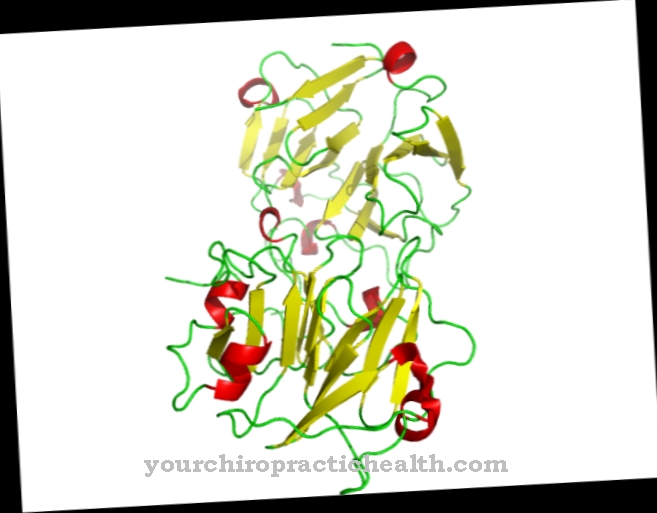
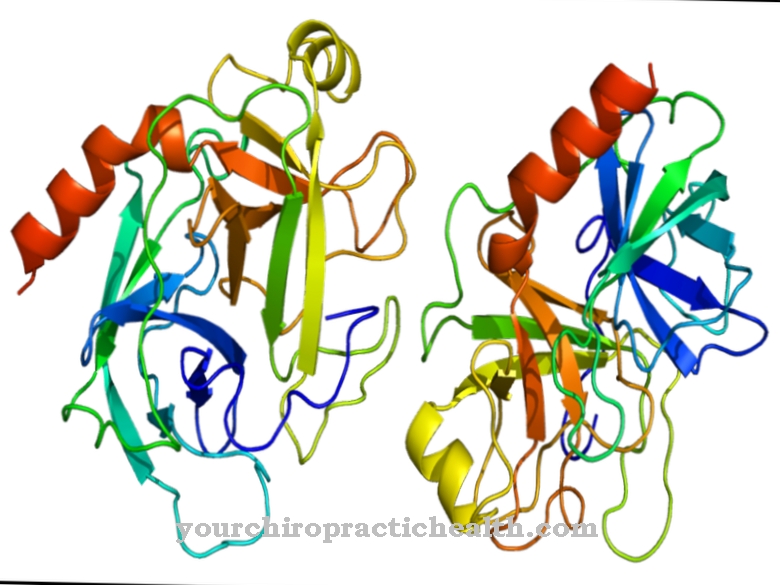
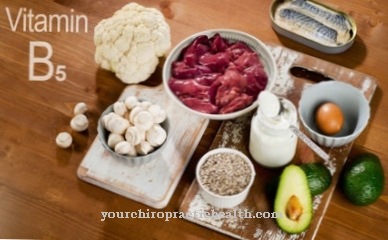
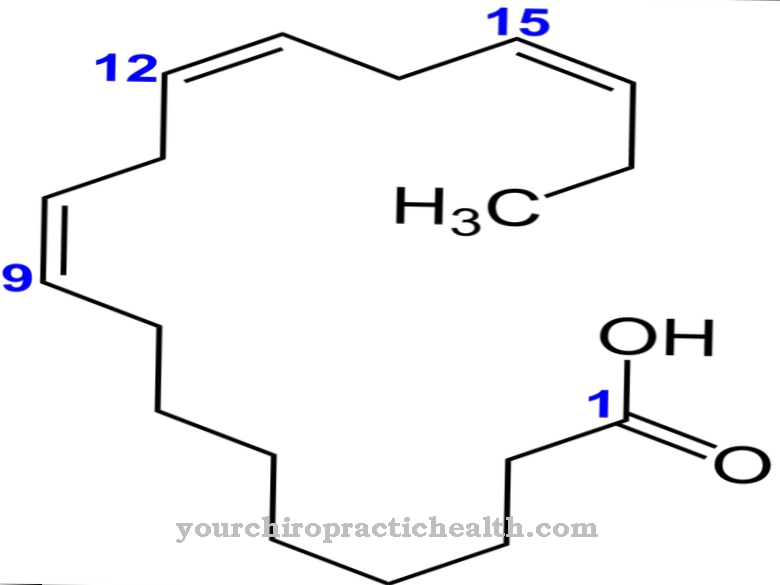
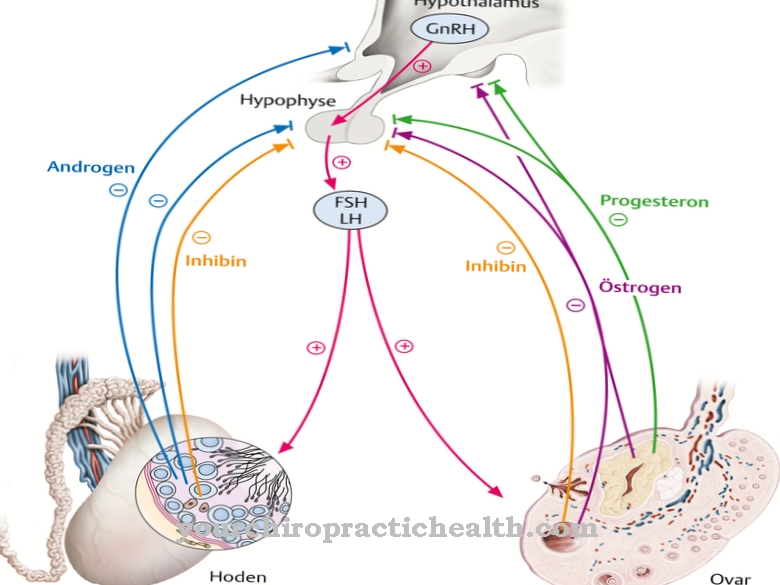


















.jpg)


